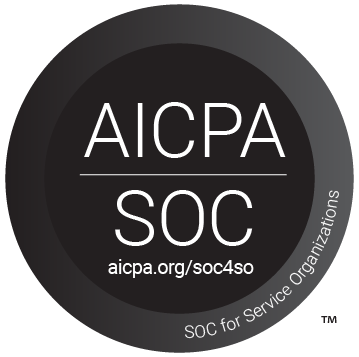Global pay data reporting laws compliance calendar
Countries around the globe are implementing pay data reporting laws. These laws are complex and varied, depending on the organization size, sector, and location.
Pay equity is the impetus behind these laws, many of which require enhanced pay transparency measures for employers. Pay data reporting requirements are expanding around the world with 54 global jurisdictions already having adopted or in the process of implementing some form of pay data reporting requirement.
Some have laws requiring equal pay that are only minimally enforced, while others have robust enforcement and reporting requirements. The European Union's Pay Transparency Directive is set to shape the future of global pay data reporting and is the most comprehensive legislation aimed at closing the gender pay gap.
The EU Directive will add reporting obligations to an additional 14 countries and will amend the reporting requirements in 13 countries with existing pay reporting requirements. This will mean mandatory pay equity analyses and remediation as well as public reporting on mean and median pay gaps.
Pay data reporting is a daunting task for organizations with a large global workforce. Employers must navigate complexities like the various approaches to pay equity, data privacy, a web of different reporting requirements, and differences in employee thresholds and deadlines.
To assist your organization in its compliance journey, our team of experts created a pay data reporting laws calendar. The calendar highlights monthly pay data reporting deadlines for jurisdictions across the world.
Additionally, we have provided guidance for how to prepare for compliance and a strategy for adopting a global approach to pay reporting and workplace equity.
2024 Global Pay Data Reporting Deadlines
Jan
Feb
Mar
France
Belgium
Austria
U.S. - New Jersey
Brazil
Apr
United Kingdom
Portugal
Italy
May
U.S. - California
Australia
Jun
Israel
U.S. - Federal (EEO-1)
Switzerland
Canada - Federal
Begins 2025
Jul
Aug
Sep
Brazil
Oct
Nov
Canada - British Colombia
Dec
Denmark
Iceland
Ireland
Employer specific deadlines
Australia, Canada - Newfoundland, Canada - Ontario, Canada - Quebec, Chile, Colombia, Finland*, Germany*, India, Japan, Latvia, Lithuania, Luxembourg*, New Zealand, Norway, South Korea, Spain, Sweden, U.S. - Illinois*, U.S. - Federal (OFCCP), U.S. - Minnesota*
*The asterisk indicates the reporting is not annual. Reporting may be more frequent or less frequent
Develop a Global Pay Equity Strategy
The best way to stay on top of global pay data reporting requirements is to have a comprehensive global pay equity strategy in place. This starts by ensuring your compensation philosophy is sound and you have conducted a pay equity analysis.
There are six pillars of an effective global pay equity strategy:
1
Proactive Pay Equity
The primary objective of a proactive pay equity analysis is to measure your unexplained pay gap and close it where appropriate.
2
Prevention of Pay Inequities
Every compensation decision - whether it's a new-hire pay decision, a merit pay increase, a promotion decision, or an off-cycle pay adjustment - is an opportunity to help prevent, or potentially exacerbate, a pay inequity.
3
Global Compliance and Reporting
Adopting a centralized approach ensures a more efficient compliance and reporting process.
4
Strategic Pay Transparency
While employers must comply with legally mandated pay transparency requirements, how far they go beyond those requirements is a choice.
5
Communication and Change Management
When communicating with employees about pay, it's important to remember that an employee's perception about their pay situation is as important as their actual pay situation.
6
Measurement and Accountability
In developing a pay equity strategy it's important to implement a measurement framework to track progress and drive accountability.
Stay Ahead of Evolving Global Pay Data Reporting Landscape
There's more to adopting a culture of pay equity than ensuring compliance with pay data reporting and pay transparency legislation.
It provides a springboard for best-in-class, forward-thinking organizations to create a more open, inclusive, and positive workplace culture, attract more talent, enhance your brand reputation and in doing so, rebuild connections and employee trust.
Partnering with a pay equity analysis software provider enables you to stay ahead of the evolving global pay data reporting landscape.
Here are some of the benefits of partnering with Trusaic:
- Allows your company to continuously evaluate your progress on pay transparency, whether that is on a monthly or quarterly basis, after making a series of new hires or layoffs, and when you are asked a question about pay transparency by an employee.
- Delivers up-to-date information on your pay equity status. Employers can also be confident that analytics reflect your current situation by offering real-time results.
- Offers more accurate and rapid results than manual analyses, which are often out of date before they are complete.
- Offers multidimensional analysis, rather than binary, and accounts for intersectionality, i.e., an ability to analyze factors such as race/ethnicity, gender, age, and disability, simultaneously.
- Ensures compliance with EEOC Title VII guidance . The EEOC made it clear that employers cannot delegate responsibility for discrimination to a third party software provider, nor rely on their vendor's assurance that its software complies with EEOC Title VII. If your pay equity software violates workplace laws you, as an employer, may be held liable.
Start your seamless global pay data reporting compliance journey today.





